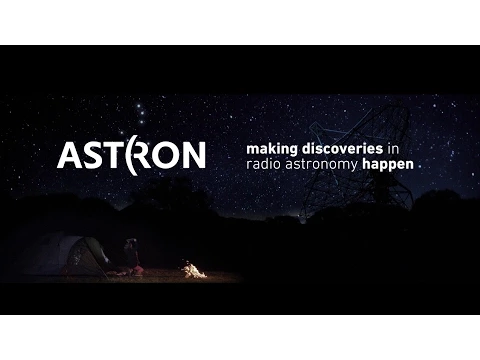Driven by the passion to push back the limits of our knowledge about the universe, ASTRON continuously pushes back the technological boundaries of our telescopes. This innovation in technology benefits (regional) industry and ultimately society as a whole.
ASTRON: Starry Innovations, Stellar Stewardship
When we look up at the sky, we see intellectual challenges. We see unsolved mysteries. We see the boundaries of what is technically possible, and we want to push those boundaries into uncharted territory. We are builders of discovery engines, seekers of greater understanding of our world and the Universe. We are ASTRON, the Netherlands Institute for Radio Astronomy.
Leading research facilities
We are a top scientific institute that makes discoveries in radio astronomy happen. We do this by developing and managing the Westerbork Synthesis Radio Telescope (WSRT) and the Low Frequency Array (LOFAR), currently the biggest radio telescope worldwide. We also coordinate the Dutch contribution to the construction of the SKA radio telescope, the future biggest radio telescope on the planet. Our leading research facilities are used by astronomers all over the world.
We create these almost impossible technological feats with a group of highly curious and creative scientists, engineers, and the business support team. Together we help each other to grow and encourage each other to try new things. We get excited by each other’s enthusiasm, involvement, and passion to collectively contribute to the body of knowledge about the Universe. We know from our 75-year experience that true innovation is only possible through collaboration.
Pushing the boundaries of knowledge
We have developed the most advanced instruments possible so astronomers can push the boundaries of their knowledge. We want to lead by example by inspiring and taking responsibility. Therefore, some of the most challenging boundaries that we want to push next are equity in science and technology, and sustainability, taking care of our Earth.
Collaboration thrives in diverse teams
Collaboration is in our DNA. Innovation flourishes when teams bring diverse backgrounds, knowledge, and perspectives together. Through inclusive practices, we enhance equity and celebrate diversity. We’re committed to creating a safe, inclusive workplace that reflects our local, regional, and global communities. With the privilege of exploring scientific frontiers comes the responsibility to make these frontiers accessible to all.
Sustainable astronomy
Studying the Universe reminds us how precious and unique life on our pale blue dot truly is. As stewards of our only home, we’re developing innovative, energy-efficient hardware and software solutions that push technological boundaries while making astronomy more sustainable.
Science for society
We pursue societally relevant science—research that challenges scientific understanding of our Universe while inspiring the next generation of scientists and engineers. We give back to communities hosting our telescopes, collaborate with industry to enhance innovation, and engage with government to maximize our societal impact.
To achieve these goals, we foster openness, honesty, and transparency, building relationships based on trust and mutual respect. Our boundless imagination is our superpower—what we can imagine, we can create.
We are part of science, we are part of nature, we are part of the communities we work in. We are ASTRON, be part of our journey.
SEE ALSO:
